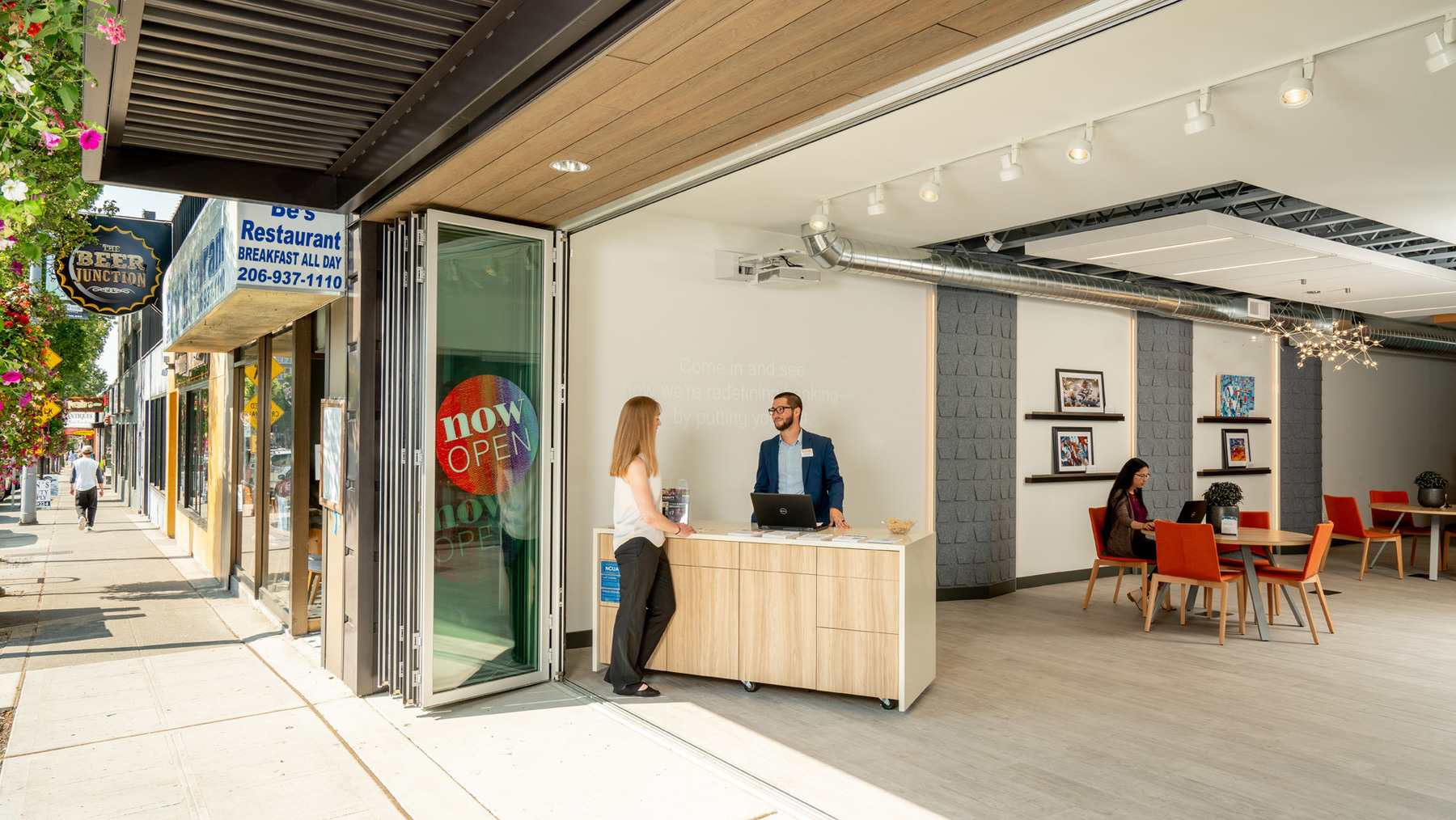In the pursuit of healthier, more sustainable facilities, many credit unions are investing in WELL and LEED building certifications. Pursuing these certifications sets a high standard that your built environment must meet and increased your investment in project, a decision which must be justified to your team and board. We believe that there is a compelling case for sustainability and wellness certifications that more than justifies the upfront cost. These certifications demonstrate a commitment to your values, your staff and members’ values, and make your facilities more operationally efficient.
Here’s the case for investing in sustainability and wellness certifications:
Commitment to Values
The fundamental core value of credit unions can be found in their motto: “people helping people.” Showing your commitment to people can sometimes be an abstract concept, but a LEED or WELL certified building demonstrates in a tangible way that your credit union puts people first and is committed to the wellbeing of staff and members. It shows that throughout the design and construction process that you took the time, energy, and resources to focus these processes on creating a facility that truly serves them.
Importance to Staff and Members
Your staff and members choose to work for and bank with a credit union for a reason. They value financial institutions that are focused on more than maximizing profits; they value institutions who put people and the issues they care about first.
When you demonstrate your commitment to healthy people and a better environment, people take notice. When HAPO Community Credit Union branch in Vancouver, Washington earned WELL Certification, their story was told on the local news. When it comes down to choosing an institution to bank with or submit a job application, the members of the community who share your values will put your credit union on the top of their list.
Operational Efficiency
What often gets lost in budget discussions is that while the upfront cost of building a WELL or LEED certified building is higher, the increased operational efficiency pays for itself many times over throughout the building’s lifecycle.
Life-Cycle Cost Analysis is a method of estimating the overall cost of a project by taking the entire lifecycle cost of a building into consideration. Over a 30 year period, this helpful analysis shows the initial building cost—the design and construction— makes up only 2% of the total lifecycle cost of the building. Operations and maintenance costs are three times that at 6%, and the people who work in the building account for 92% of the cost.
Investing up front in buildings that save energy and focus on users’ wellbeing barely makes an impact on the overall lifecycle cost of a building, but these efforts have a massive impact on the operational costs and staff productivity. Take lighting systems as an example. The dollar value of a high-efficiency circadian lighting system may seem high compared to alternatives, but consider that cost next to 30 years of lower electricity bills and more awake, energetic staff.
Making the Case
Demonstrate your commitment to values. Become the credit union that today’s members and workforce are looking for. Lower lifecycle costs with better operational efficiency.
When you add up the benefits of pursuing wellness and sustainability certifications, they make a compelling case.
Don’t forget to subscribe to our newsletter to stay up to date with our latest articles and insights!

